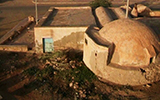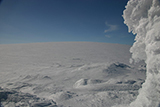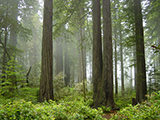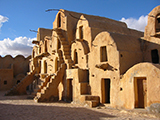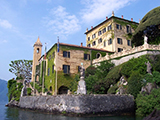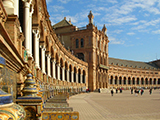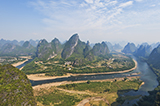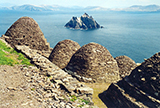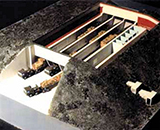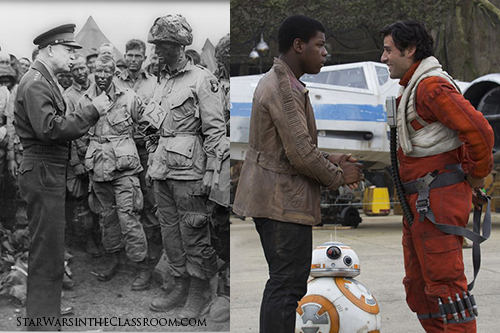
Star Wars fans around the world rejoiced when production of Episode VII was announced in 2012. A new era of adventures were ahead and most exciting of all was the return of beloved original trilogy characters like Luke Skywalker, Han Solo, Chewbacca, and Princess Leia. The burning questions concerning the post-Death Star II days of the Empire and Rebellion would finally be answered. Because a film's journey from concept to screen is no simple feat, fans had to wait three long years before The Force Awakens reached theaters in December, 2015.
Months and sometimes years of preparation precede the end result that is shown on the big screen and The Force Awakens was certainly no different. Writing the script, hiring a director, assembling a cast, financing the film and costume design are just some of the steps involved in making a movie. One of the most important stages of any film production, especially a Star Wars movie, is location scouting. Star Wars fans expect to be taken to new and exciting alien worlds filled with strange creatures, otherworldly flora and extraordinary structures.
To achieve this magic, location scouts seek out little known and often unseen places that exist right here on our planet. This tradition goes back to the beginning of Star Wars with A New Hope when George Lucas chose the African nation of Tunisia to be the backdrop for the desert planet Tatooine. While scouting in 1975, the crew discovered the unique architecture of Ajim on the island of Djerba. Lucas determined that this small village would make a perfect setting for the “wretched hive of scum and villainy” that was to be Mos Eisley. A few space props and costumed aliens were scattered about, but the area was more or less used as it was to create the illusion of an alien planet. Other nearby locations were used for the Junland Wastes and a deleted scene at Tosche Station. When A New Hope premiered in May 1977, audiences were unknowingly looking at a mostly unchanged Tunisian village while simultaneously being transported to “a galaxy far, far away.”
The tradition continued into the remaining films of both the original and prequel trilogies. In The Empire Strikes Back the Hardangerjøkulen glacier near Finse, Norway was used to double as the ice world of Hoth. Return of the Jedi took us to the forest moon of Endor which was actually a redwood forest in Del Norte County, California. The prequels saw a return to Tunisia, which once again doubled as Tatooine, sites in Italy and Spain served as the Earth-like planet of Naboo and locations in Thailand and China functioned as the Wookiee planet of Kashyyyk.

In keeping with this tradition, J.J. Abrams and the rest of The Force Awakens crew were challenged to find visually exciting locations that evoked a sense of alien familiarity. One of the most talked about locations has been the Skellig Islands off the Irish coast. The isolated and ancient feel of the islands made a perfect backdrop for the hiding place of Luke Skywalker and, apparently, the first Jedi Temple.
Another location of The Force Awakens strikes at the heart of one of World War II’s most iconic photos. On the evening of June 5, 1944 in Berkshire, England, Allied paratroopers were gathered and preparing to board C-47 aircraft for their parachute jump into Nazi occupied France, an event we remember today as D-Day. General Dwight Eisenhower, the Supreme Commander of Allied Forces, was visiting Royal Air Force Greenham Common where men of the US Army's 502nd Parachute Infantry Regiment, 101st Airborne were preparing for battle. Eisenhower’s visit seems to have had a dual purpose: to boost the morale of his men before going into combat and to, perhaps, give himself confidence that the men were ready for the invasion.
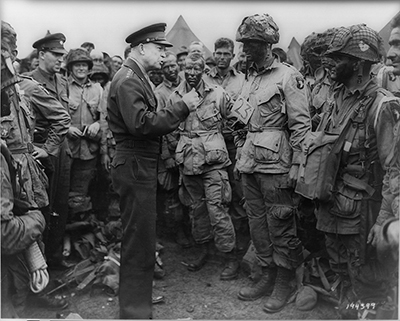
General Eisenhower talking with US troops of the 506th PIR on June 5, 1944.
As Eisenhower spoke with his soldiers, a US Army photographer snapped a picture that has become one of the most enduring of all World War II photos. In the iconic picture, Eisenhower can be seen in mid-sentence as the gathered soldiers listen attentively. Lt. Wallace C. Strobel, who can be recognized by the jumpmaster number “23” hanging from his neck, recalled Eisenhower talking with him about fly fishing in Michigan, Strobel’s home state. Simple conversation was Eisenhower’s way of engaging the men and getting them relaxed before undertaking the great mission that loomed ahead.
Before departing, General Eisenhower gave the order of the day, “Full victory - nothing less.” A few hours later, the men in the photo and thousands more departed England to be among the first to set foot on French soil and begin the costly and destructive liberation of Western Europe from Nazi tyranny.
So, what does this photo have to do with Star Wars? Greenham Common Field, where the photo was taken, served as the filming location for the Resistance base on the Outer Rim planet D'Qar in The Force Awakens. More specifically, the T-70 X-wing hangars seen in the film were actually six Cold War era weapon shelters built on the base in the early 1980’s.
These shelters were originally part of Greenham’s GAMA (GLCM Alert and Maintenance Area) which collectively made up six aboveground, nuclear blast proof installations designed to house and protect Gryphon Ground Launched Cruise Missiles or GLCM’s and their crews. A GLCM is essentially a cruise missile that can be transported and fired from anywhere via a mobile launch vehicle. With NATO backing, the US Air Force built GAMA installations at military bases across Europe, including Greenham and nearby Royal Air Force Molesworth.
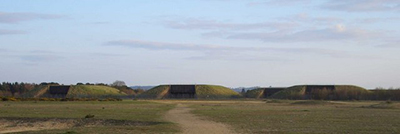
GAMA installations.
The shelters seen in the film were constructed with a two meter thick concrete ceiling, utilized titanium plating, and were covered in sand and tons of clay (hence the grass growing over the structures). Each shelter also featured three hydraulic blast doors that allowed for quick entry and exit of the crew during emergency deployment.
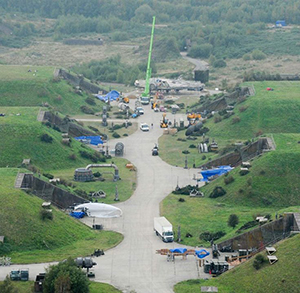
Production photo of The Force Awakens showing use of the six GAMA shelters.
During a high alert, the blast doors of each GAMA would open and the GLCM crews would transport their missiles to a predesignated launch location nearby. There they would prepare and await orders to launch their deadly cargo. Fortunately, the day never came when such weapons were needed.
Apart from World War II and the Cold War, Greenham Common has experienced a long military history. According to the Greenham Common Trust's website, the grounds saw military use as far back as the Roman invasion of Britain. The area was also used during the English Civil War and the Napoleonic Wars. The controversial installation of the GAMA's also led to the Greenham Common Women's Peace Camp which remained at the base from 1981 through 2000.
With the collapse of the Soviet Union and an end to the Cold War, the cruise missiles were removed and RAF Greenham Common was closed in 1993. Twenty years later, J.J. Abrams and crew would bring an awakening to Greenham’s once deadly Cold War relics. The blast doors of the GAMA’s were opened and fighters of a different sort once again occupied the base. In the end, it seems fitting that a movie series steeped in so much history would utilize such a significant former military base to tell a story of good overcoming evil in a fierce battle.
Theatrical trailer for The Force Awakens which reveals some of the GAMA's (around 1:29).
The Resistance, The New Republic, D'Qar, Resistance X-wing
- Democracy versus Dictatorship
- Imagery of the Third Reich in the First Order
- Corruption of Powerful Symbols
- Order 66 and the Night of the Long Knives
- Star Wars & the Dam Busters
- What if Hitler Had Developed Nuclear Weapons?
- Star Wars & Propaganda
- Sander de Lange's Galactic Backpacking Series on StarWars.com
- Star Wars Locations (A Fan Site)
- Wookieepedia - Star Wars Filming Locations
- Library of Congress - Original Copy of Eisenhower Photo
- Baltimore Sun - "On D-Day minus 1, the subject was fishing"
- Greenham Common Trust
- Greenham Common Women's Peace Camp
- Remembering Greenham Common
- Imperial War Museum - The Women Who Took On The British Government's Nuclear Programme
First posted on: January 1, 2016 by Wes Dodgens
